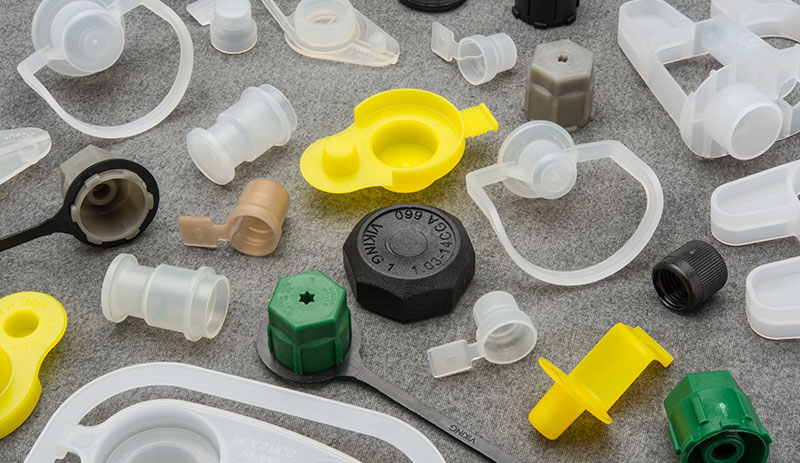by Katy Ibsen, contributing writer
Plastics Business
Injection molders invest time, skill and capacity to meet the needs of their external customers. Those customers, after all, are the lifeblood of the business – the determiners of the bottom line. However, some molders have an internal customer in the form of a proprietary product that can fill the void in custom work, add revenue, be leveraged for new custom business and bring a greater awareness of a plastic molder’s capabilities.
Wisconsin Plastics enters the consumer market

Wisconsin Plastics, Inc. (WPI), a contract injection molder that serves clients in the aerospace and defense, automotive, medical and merchandise markets, expanded its business strategy and added proprietary products to its fold in 2015. The result is PROvider, a line of hand towel, bathroom tissue and napkin dispensers.
Wisconsin Plastics is located in the heart of the papermaking industry, and the company has a long history in designing dispensing systems for others. That expertise led WPI leadership to explore a proprietary product.
WPI began with a hand towel dispenser, designed for easy refilling and to work each and every use. In addition to its function, customers ordering the dispenser could customize its color and create custom messaging on the front cover, including a full-color logo. Complementary products quickly followed, including a bathroom tissue dispenser, and most recently, the PROvider napkin dispenser. Like the hand towel dispenser, the napkin dispenser allows businesses to customize the color and include a logo, allowing them to expand their brand identity.
“We had all of the key pieces in-house, so developing a program like PROvider line was very straight-forward,” said Mike Kilgore, vice president of marketing and sales at PROvider.
Viking Plastics meets a need in automotive
Viking Plastics, a Pennsylvania-based custom molder with a strong customer base within the automotive and appliance industries, decided to develop its own line of caps and plugs for automotive sealing solutions.
“Unlike some businesses, we didn’t head into producing a proprietary product because we started with a great product idea and had big dreams of everyone coming to buy it from us,” said Kelly Goodsel, president and CEO. “Instead, we saw a need created by regulations within the automotive industry that we could fill.”
Changing specifications drive development in the automotive industry, and Viking’s owners saw an opportunity early in the company’s history to develop the tooling automotive OEMS need – and then retain ownership of the tooling. “If you’re an early developer of the product,” said Goodsel, “you can become the standard-bearer. Then, as volumes grow, your capacity grows, and that creates barriers to entry for others. When we decided to build the tooling and own the tooling, that gave us control of a proprietary product, but also the responsibility.”
Now, the company produces nearly 100 part numbers in its caps and closures line, representing approximately 15% of its overall revenue.
The challenges
Developing and succeeding with a proprietary product is not without challenges.
For WPI, the PROvider line, while innovative, entered an already established – and possibly crowded – market. The company has seen firsthand the challenges of convincing customers to make a change from their existing dispensers. “Our goal is to create brand awareness by having a product line that is cost competitive, yet outperforms our competitors,” said Kilgore. “We have a long history in the injection mold manufacturing industry, which helps us compete globally against recognized brands.”
Additionally, a proprietary molded product requires patience. Beginning with marketing the product, identifying potential customers and eventually closing the deal, the sales cycle can vary in length. “You always need to keep your pipeline full and always be engaging new customers,” said Kilgore.
“I won’t say it’s easy, but it’s efficient because we are the design house, the molder, the manufacturer of the product, and we also are the distributor,” he continued. “So, there’s a lot of pieces of the puzzle that we already have here in place at WPI. I guess if you want to say we cut out the middleman, we’ve definitely done that with our own program.”
Viking, too, has seen challenges, despite entering a well-known market with large volumes. Creating products that are industry-specific requires continual research and development – and to a certain extent, an ability to predict market trends. As Goodsel explains, one product Viking thought was going to be a real hit has gone through multiple changes, but sales have not taken off as expected.
“We’ve probably developed 30 new products in the last five years, and not all of them have been a hit,” said Goodsel. “That’s the downside of proprietary products. In some cases, sales took off for a little while, and then our customer took it to China and got it copied. It’s not all roses, but in general, it’s been a nice piece of our business. We continue to invest in it.”
Resources and capacity
When considering the development of a proprietary product, a company also must consider the resources needed, capacity required and possibly, new employees for marketing and sales. WPI has a dedicated sales staff and internal marketing team that promotes the PROvider line; and the company trained its production staff to accommodate the new products and anticipated customer expectations.
“Servicing the proprietary product sector at WPI requires a team of employees to manage the work schedule and a production schedule that keeps everyone on track. This is true for the PROvider line and non-PROvider programs,” said Kilgore. “All WPI customers demand the same level of attention, and we take pride in making sure their needs are met.”
And, a proprietary product can be a double-edged sword for a busy custom molder. When volumes grow, capacity grows – but that possibly brings interruption to existing workflow. “On the custom side of the business, the customers are calling, asking you to provide quotes and initiate new programs. With the proprietary side of the business, it can be a challenge to carve out time to mold your own products when there isn’t necessarily a deadline, so there’s a constant pull of the rope,” said Goodsel.
“You’ve got to dedicate resources and time to working on those products in order to get them over the finish line.”
The advantages
The strategy behind proprietary products is, in part, about creating a stronger product for the market – but mostly about diversifying revenue streams. In WPI’s case, the PROvider has supplemented the company’s ongoing molding business. “It helped fill in the peaks and valleys common with contract manufacturing,” said Kilgore.
WPI is leveraging custom work within its PROvider wheelhouse. The line of products is compatible to Universal products (tissues and towels), however, as an injection molder, WPI can adapt its products to other paper products.
“We have the ability – if a customer has a very specific core size in a roll towel or something of a proprietary nature that they have in the roll towel or tissue – we can change the plastic parts by updating the tooling that we have,” said Kilgore. “So that means that we can change the tooling to be a proprietary set … giving our customers a very unique solution.”
And, in addition to the bottom line impact, the proprietary line opens other opportunities when current customers see what else Viking is capable of molding. “That drives our other new business opportunities,” he said.
In the end, Goodsel explained, there are two reasons for a custom molder to investigate the possibility of a proprietary product. “Number one, it provides a sense of security – a little more control of your business because you own the tooling, you own the design and you own the automation that goes into making an assembly. It eliminates the pressure that comes with an external customer who needs a lower price or is threatening to move the tool.”
The second, he said, is that the profitability of a proprietary product can be reinvested to strengthen both the custom and the proprietary sides of the business. “You should be slightly more profitable with proprietary products than with something that a dozen other molders are competing on,” Goodsel explained. “But, you have to convert those profits into further research and development to keep the engine going.”





